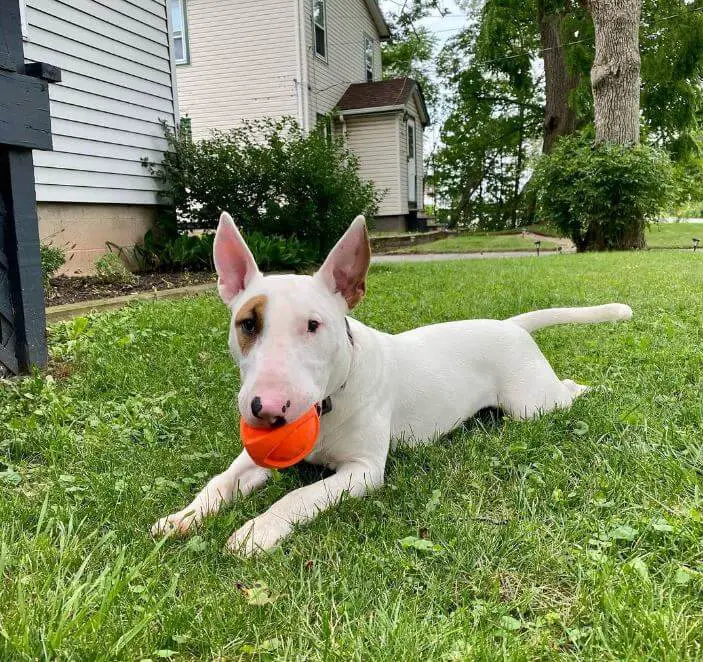Chewing is a natural behavior for dogs that serves several purposes, including teething, cleaning teeth, exercising jaw muscles, and alleviating boredom or anxiety. However, excessive or destructive chewing can become a problem for dog owners, resulting in damaged furniture, shoes, and other household items. In this article, we will explore the reasons why dogs chew, how to manage and redirect this behavior, and when to seek professional help.

Why do dogs chew?
Chewing is an innate behavior for dogs that starts during puppyhood when they are teething and continues into adulthood. There are several reasons why dogs chew:
1 – Teething: Just like human babies, puppies go through a teething phase where their baby teeth are replaced with adult teeth. Chewing helps to alleviate the discomfort and itchiness associated with teething.
2 – Dental health: Chewing can help clean a dog’s teeth and gums, promoting good oral health and preventing dental issues like plaque and tartar buildup.
3 – Boredom or anxiety: Dogs may chew when they are bored or anxious as a way to alleviate stress or release energy. Chewing provides mental stimulation and can be a self-soothing behavior for dogs.
4 – Exploration: Dogs use their mouths to explore their environment, and chewing can be a way for them to investigate new objects or scents.
5 – Hunger: Some dogs may chew out of hunger or a desire to find food, especially if they are not getting enough nutrition from their regular meals.

How to manage chewing behavior in dogs:
Managing chewing behavior in dogs involves providing appropriate outlets for their natural chewing instincts, redirecting the behavior, and setting boundaries. Here are some tips to help you manage your dog’s chewing behavior:
1 – Provide appropriate chew toys: Offer a variety of safe and durable chew toys that are specifically designed for dogs. Avoid giving them items that resemble household items, as this can create confusion and encourage destructive chewing. Rotate the toys to keep them interesting and engaging for your dog.
2 – Supervise and redirect: Supervise your dog’s chewing behavior and redirect them to appropriate chew toys whenever you catch them chewing on inappropriate items. Use positive reinforcement to reward and praise your dog when they chew on the correct items.
3 – Exercise and mental stimulation: Make sure your dog gets enough physical exercise and mental stimulation to help reduce boredom and anxiety, which can be underlying causes of excessive chewing. Provide regular walks, play sessions, and puzzle toys to keep your dog mentally and physically engaged.
4 – Training and obedience: Invest in basic obedience training for your dog to establish clear boundaries and reinforce positive behaviors. Use commands such as “leave it” and “drop it” to redirect your dog’s chewing behavior when needed.
5 – Use deterrents: Use bitter-tasting sprays or other deterrents on household items or areas that your dog tends to chew on to discourage the behavior.
6 – Create a safe environment: Keep valuable or dangerous items out of your dog’s reach to prevent them from being chewed on. Use baby gates or crate training to restrict access to certain areas of your home until your dog can be trusted not to chew on inappropriate items.
7 – Seek professional help: If your dog’s chewing behavior is persistent or destructive despite your efforts, it’s important to seek professional help from a veterinarian or a certified professional dog trainer. They can assess your dog’s behavior, provide additional guidance and training, and rule out any underlying medical or behavioral issues.

Chewing is a natural behavior for dogs that serves several purposes, but it can become a problem when it is excessive or destructive. By understanding the reasons behind your dog’s chewing behavior and implementing appropriate management strategies such as providing appropriate chew toys, supervising and redirecting, providing exercise and mental stimulation, training, using deterrents, creating a safe environment, and seeking professional help when needed, you can effectively manage and redirect your dog’s chewing behavior. Remember to always be patient, consistent, and positive in your approach to managing your dog’s chewing behavior. With proper guidance and management, you can help your dog develop appropriate chewing habits and ensure a happy and healthy relationship between you and your furry friend.
